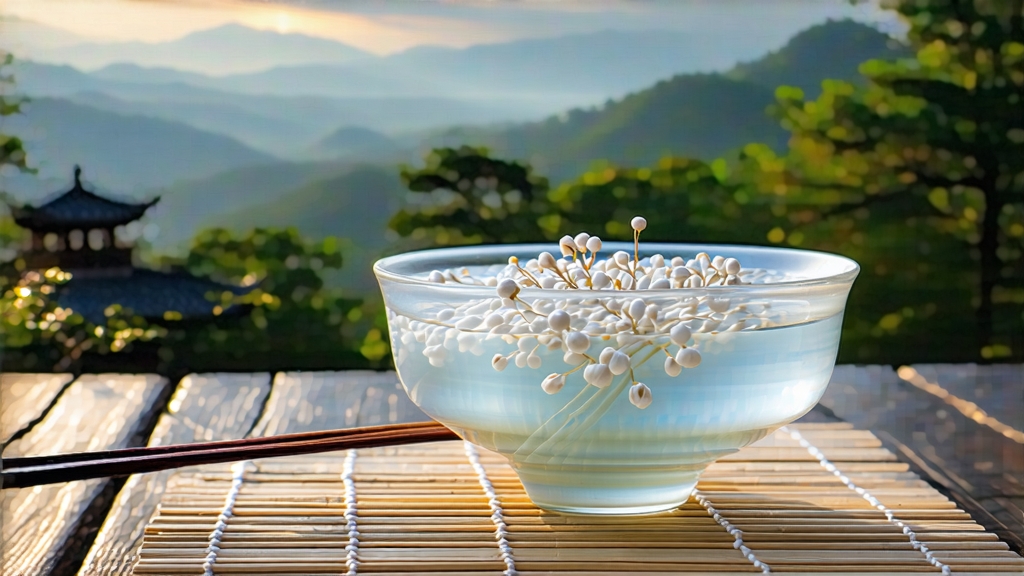
When Chinese tea scholars speak of “white tea,” they are not referring to a pale infusion alone, but to an entire philosophy of restraint. Among the six great tea families, white tea is the only one that defines itself by what it refuses to do: no pan-firing, no rolling, no charcoal roasting, no heavy-handed manipulation. It is tea that asks to be left alone, and in that solitude it becomes the most subtly expressive leaf China produces. Nowhere is this credo more purely embodied than in Fuding Silver Needle—Bai Hao Yin Zhen—the aristocrat of white teas, a beverage so delicate that drinking it feels like sipping moonlight collected at dawn.
Historical whispers
Silver Needle’s documented history begins in the 1790s, when the imperial court still sent tribute tea northward along the Grand Canal. Local chronicles from Fuding County, on the northeastern coast of Fujian, record that super-grade bud teas were already being packed in lead-lined chests and sealed with the governor’s wax stamp. By the late Qing, European exporters stationed in Fuzhou were writing home about “flowery pekoe tips” that fetched four times the price of Keemun. Yet the tea remained curiously anonymous; it was simply called “white tips” until 1958, when the state trading corporation standardized the name Bai Hao Yin Zhen and limited its origin to two micro-zones: Fuding and the neighboring county of Zhenghe. Today, every genuine Silver Needle leaf is still required by Chinese national standard GB/T 22291 to be born within those granite hills kissed by the East China Sea.
Terroir that tastes of sea fog
Fuding’s coastline is serrated with bays that inhale humid maritime air. At night the land cools quickly; fog drifts inland and settles in the high valleys like a silk duvet. The indigenous cultivar that has evolved here—Fuding Da Bai Hao, “Big White Down”—develops extra-thick epidermal hairs (trichomes) to protect its apical buds from salt-laden moisture. Those hairs are the silver that gives the tea its name, and they are also tiny aroma vaults, storing linalool and geraniol precursors that will later release notes of lavender, honeydew and chilled sake.
Plucking: one bud, zero compromise
The harvest calendar is brutally short. Only ten days, sometimes only five, between Qingming and the early part of Guyu—the solar term when the bud reaches 2.5–3 cm but has not yet unfurled into a leaf. Experienced pickers pinch exactly at the abscission layer, leaving behind the stipule so the plant can heal quickly. A full kilogram of finished Silver Needle represents 18,000–20,000 individual buds, all plucked before nine in the morning while the dew is still cool. Any later, and the sun begins to metabolize polyphenols away, robbing the tea of its later sweetness.
Withering: the art of doing nothing, perfectly
The buds are laid two centimeters deep on bamboo trays woven from strips of Phyllostachys makinoi. For the next 36–48 hours they will be caressed by air alone. Traditional workshops open and close louvered windows by hand, responding to barometric pressure the way a sailor trims a sail. The goal is to reduce moisture from 75 % to 8 % without ever letting the leaf temperature rise above 32 °C. Enzymes remain active, converting bitter catechins into softer gallated forms while liberating floral volatiles. If the ambient humidity spikes, workers wheel the trays into a gentle breeze produced by antique brass fans; if night temperatures drop too low, charcoal embers smolder inside perforated clay jars that radiate infrared heat without scent. Nothing is rushed; the leaf is coaxed, not forced.
Sorting and resting
Once withered, the buds are hand-sorted under full-spectrum LED light. Any bud that shows a purple tip—sign of anthocyanin and future astringency—is removed. The retained needles rest for seven days in cedar-lined cabinets so that residual moisture migrates evenly from core to surface, a process called “returning fire.” Only then are they packed into triple-ply kraft bags flushed with nitrogen and stored at 4 °C until July, when the summer heat stabilizes and the tea is considered safe to ship.